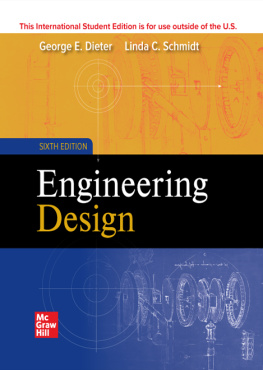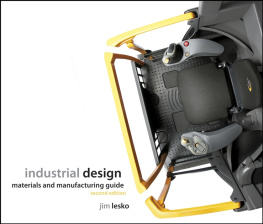Grete Rusten - Industrial Design, Competition and Globalization
Here you can read online Grete Rusten - Industrial Design, Competition and Globalization full text of the book (entire story) in english for free. Download pdf and epub, get meaning, cover and reviews about this ebook. year: 2009, publisher: Palgrave Macmillan, genre: Science. Description of the work, (preface) as well as reviews are available. Best literature library LitArk.com created for fans of good reading and offers a wide selection of genres:
Romance novel
Science fiction
Adventure
Detective
Science
History
Home and family
Prose
Art
Politics
Computer
Non-fiction
Religion
Business
Children
Humor
Choose a favorite category and find really read worthwhile books. Enjoy immersion in the world of imagination, feel the emotions of the characters or learn something new for yourself, make an fascinating discovery.

- Book:Industrial Design, Competition and Globalization
- Author:
- Publisher:Palgrave Macmillan
- Genre:
- Year:2009
- Rating:5 / 5
- Favourites:Add to favourites
- Your mark:
- 100
- 1
- 2
- 3
- 4
- 5
Industrial Design, Competition and Globalization: summary, description and annotation
We offer to read an annotation, description, summary or preface (depends on what the author of the book "Industrial Design, Competition and Globalization" wrote himself). If you haven't found the necessary information about the book — write in the comments, we will try to find it.
Industrial Design, Competition and Globalization — read online for free the complete book (whole text) full work
Below is the text of the book, divided by pages. System saving the place of the last page read, allows you to conveniently read the book "Industrial Design, Competition and Globalization" online for free, without having to search again every time where you left off. Put a bookmark, and you can go to the page where you finished reading at any time.
Font size:
Interval:
Bookmark:
Producing an edited book may appear at first sight to be a comparatively simple task. All one has to do is identify a title, a set of aims and objectives, a structure and a possible list of chapter titles or topics. The next task involves persuading academics to participate in the project and finally the identification of a publisher willing to produce the book. Writing is followed by editing and then more writing and finally the delivery of the manuscript to the publisher. If only the production of an edited book were as simple as this description. This book began life at a meeting in Bergen, Norway, where we discussed and agreed on proposals for two linked books on design. Our initial interest in this topic developed from a research project on Design Competitiveness funded by the Norwegian Research Council in 200607. One proposal was for an authored book and one was the proposal that began the journey that eventually led to the publication of this edited collection. During the course of the day we had an interesting and stimulating intellectual discussion and hoped that one day that our deliberations would result in the publication of an edited book that would begin to address the relationship between design and competitiveness.
Producing this edited book involved numerous meetings of the two editors, constant e-mailing and the cooperation of the chapter authors and the publisher. We would like to thank Virginia Thorp, the Senior Commissioning Editor, Business and Management at Palgrave Macmillan for commissioning the book and Paul Milner, Editorial Assistant at Palgrave Macmillan for the care and attention he has given to managing the books travels through the publishing production process.
An edited book is a partnership between an editor, in this case two editors, and a group of chapter authors. As editors we would like to thank the chapter authors for rising to the challenge that we set them and for working with us in a constructive manner over the last few months. We would also like to thank Anne Kristin Wilhelmsen at the Institute for Research in Economics and Business Administration (SNF), Bergen, who played an extremely important role in integrating the various computer files together and in ensuring that we delivered a relatively clean and integrated manuscript to the publisher.
Developing a proposal for an edited book represents the start of a long and interesting journey, and unexpected things can happen along the way. It is therefore with great regret that we have to report the passing of two of our chapter authors and colleagues who made important contributions to this book: Professor Magnus Mrck, Centre for Consumer Science, School of Business, Economic & Law, University of Gothenburg, Sweden and Professor Alan D, MacPherson, Department of Geography, and Director, Canada-United States Trade Centre, University at Buffalo, US. May you rest in peace. Our thoughts are with you and your families.
John R. Bryson, Birmingham, UK
Grete Rusten, Bergen, Norway
14 May 2009
Grete Rusten and John R. Bryson
The ongoing deepening of globalization is associated with enhanced competition and especially price-based and design-based competitiveness. High value-added goods are developed, designed and still manufactured in developed market economies whilst low value-added goods may be designed in developed market economies, but manufactured in low-cost economies like China, India or Turkey (Deitz and Orr 2006). The concentration of the production of low value-added manufactured products in countries like China represents a stage in the evolution of the economic geographies of production. Nevertheless, Chinese firms are trying to move up the value chain to produce design-intensive and branded high value-added goods. The relationship between high value-added goods and developed market economies is partly explained by a shift that has occurred in these locations, away from competition based on price, to competition based on intangibles such as design, branding, research and development (R&D) and embedded or attached services (Bryson et al. 2004; Bryson 2008, 2009a & b). It is important not to be too fixated on consumer products. The majority of products are designed; this includes machine tools, ships, medical scanners and safety clothing intended for extreme environments and used, for instance in marine fishfarming or the oil and gas industry (Rusten and Bryson 2007, Rusten and Stensheim 2007, Rusten 2008).
The emphasis that is being placed on investment in intangibles represents an awareness by some companies located in high-cost locations that competing solely on price is increasingly impossible (Bryson et al. 2008). The alternative may involve shifting manufacturing production and even some service functions to low-cost locations (Bryson 2007) and leaving a slimmed-down management, marketing and R&D facility in a developed market economy. Investment in intangibles now matters and is considered by governments to be a critical element of national competitiveness. Nevertheless, investment in intangibles is extremely difficult to measure and also difficult to address through policy development. In 2008, the British government published a new manufacturing strategy that identified five interrelated dynamics that continue to reshape global manufacturing:
- the increasing complexity of global value chains,
- the accelerated pace of technology exploitation,
- the growing importance of investment in intangibles,
- the increased recognition that investment in people and skills is amongst the most important investments for firms to make, and
- the move to a low-carbon economy (BERR 2008: 12).
The emphasis placed on intangibles recognizes the importance of knowledge assets that include design and other aspects of product development; software; brand-building; training; and improvements to business processes. Such investment boosts firms competitiveness and enables products to meet changing consumer needs. The governments role is to ensure companies have the right incentives and information to invest in intangibles ... (BERR 2008: 13). The recognition by the British government and other governments that investment in intangibles is a key element of firm-based and national competitiveness is one of the drivers behind this book. Our argument is very simple: design matters and plays a crucial but often neglected role in the competitiveness of companies and nations.
Design has always played an important role in firm-based competitiveness. The relationship between design and competitiveness is complex, and it is also partially determined by geography. A product designed for the Swedish or German consumer may have limited appeal in other countries. This is a complex issue that is affected by national constructions of consumer behaviour. A good example is the introduction of automatic washing machines into North America. During the 1950s wringer manual washers outsold automatic washing machines in Canada, while in the United States automatic washing machines accounted for 75 per cent of sales. The explanation for these differences is complex but partly involves the fact that automatic washing machines required hot running water, as well as a water supply at a strong steady pressure. Many Canadian homes did not meet these infrastructural requirements. Infrastructural problems are only part of the explanation; another part concerns the perception amongst Canadian consumers that automatic washing machines used too much water and were too expensive compared to wringer machines (Parr 1999: 21842). Parrs analysis of the consumption of domestic goods in Canada highlights many of the geographical issues that surround the relationship between design and competitiveness. National consumer behaviour and regulations are also important in this context. Thus, on 20 November 1940 Canada passed a regulation that forbade the introduction of new models of consumer appliances during the war. In contrast, American civil servants controlled output but encouraged companies to redesign products. This led to the design and development of new models that were lighter. It also meant that an American manufacturer who reduced the metal required to make a refrigerator from eighty-five to twenty pounds could increase production, remain within the controllers quota, and keep his design team nimble in anticipation of the end of the war (Parr 1999: 24).
Font size:
Interval:
Bookmark:
Similar books «Industrial Design, Competition and Globalization»
Look at similar books to Industrial Design, Competition and Globalization. We have selected literature similar in name and meaning in the hope of providing readers with more options to find new, interesting, not yet read works.
Discussion, reviews of the book Industrial Design, Competition and Globalization and just readers' own opinions. Leave your comments, write what you think about the work, its meaning or the main characters. Specify what exactly you liked and what you didn't like, and why you think so.





